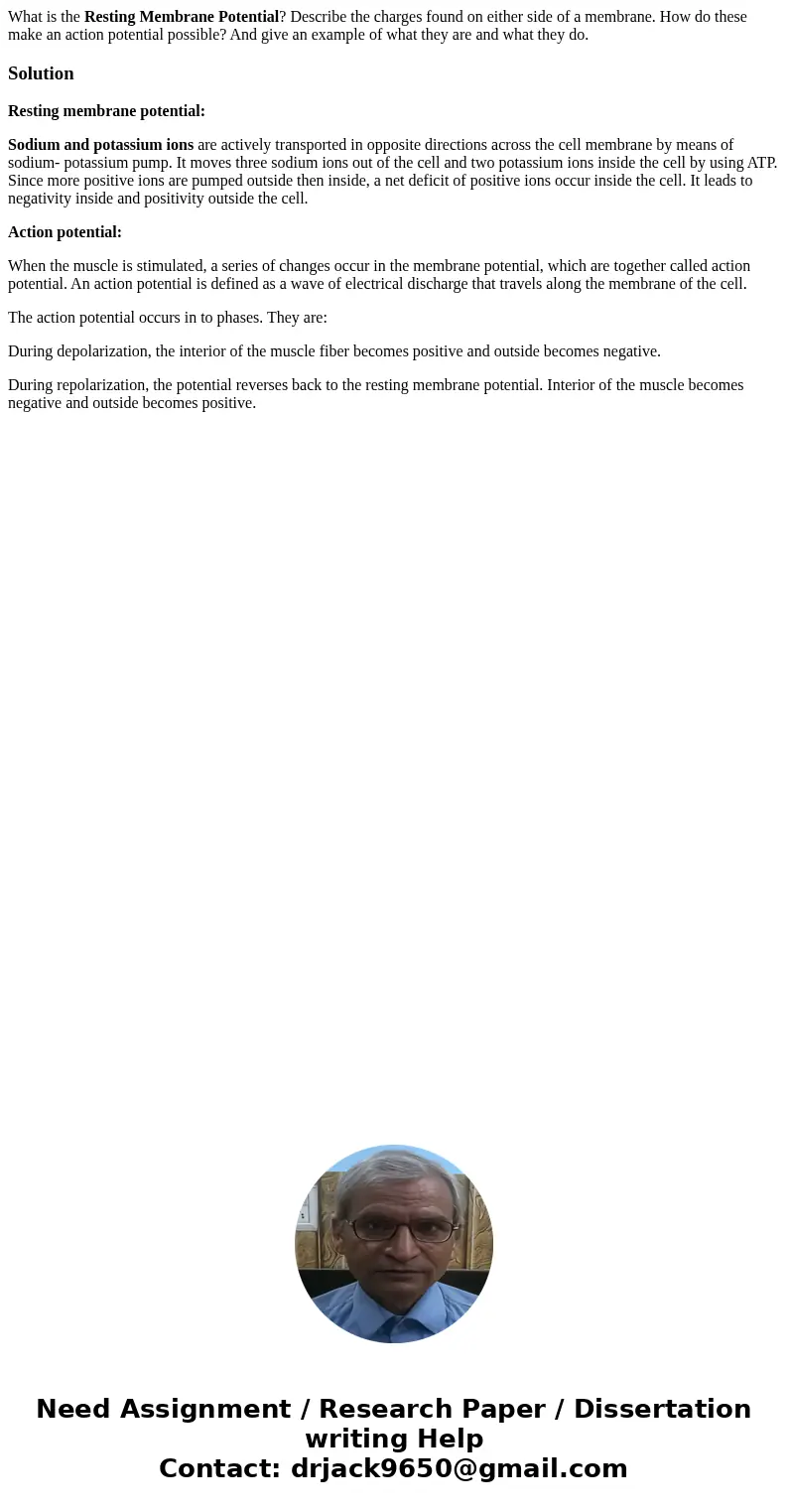What is the Resting Membrane Potential Describe the charges
What is the Resting Membrane Potential? Describe the charges found on either side of a membrane. How do these make an action potential possible? And give an example of what they are and what they do.
Solution
Resting membrane potential:
Sodium and potassium ions are actively transported in opposite directions across the cell membrane by means of sodium- potassium pump. It moves three sodium ions out of the cell and two potassium ions inside the cell by using ATP. Since more positive ions are pumped outside then inside, a net deficit of positive ions occur inside the cell. It leads to negativity inside and positivity outside the cell.
Action potential:
When the muscle is stimulated, a series of changes occur in the membrane potential, which are together called action potential. An action potential is defined as a wave of electrical discharge that travels along the membrane of the cell.
The action potential occurs in to phases. They are:
During depolarization, the interior of the muscle fiber becomes positive and outside becomes negative.
During repolarization, the potential reverses back to the resting membrane potential. Interior of the muscle becomes negative and outside becomes positive.

 Homework Sourse
Homework Sourse